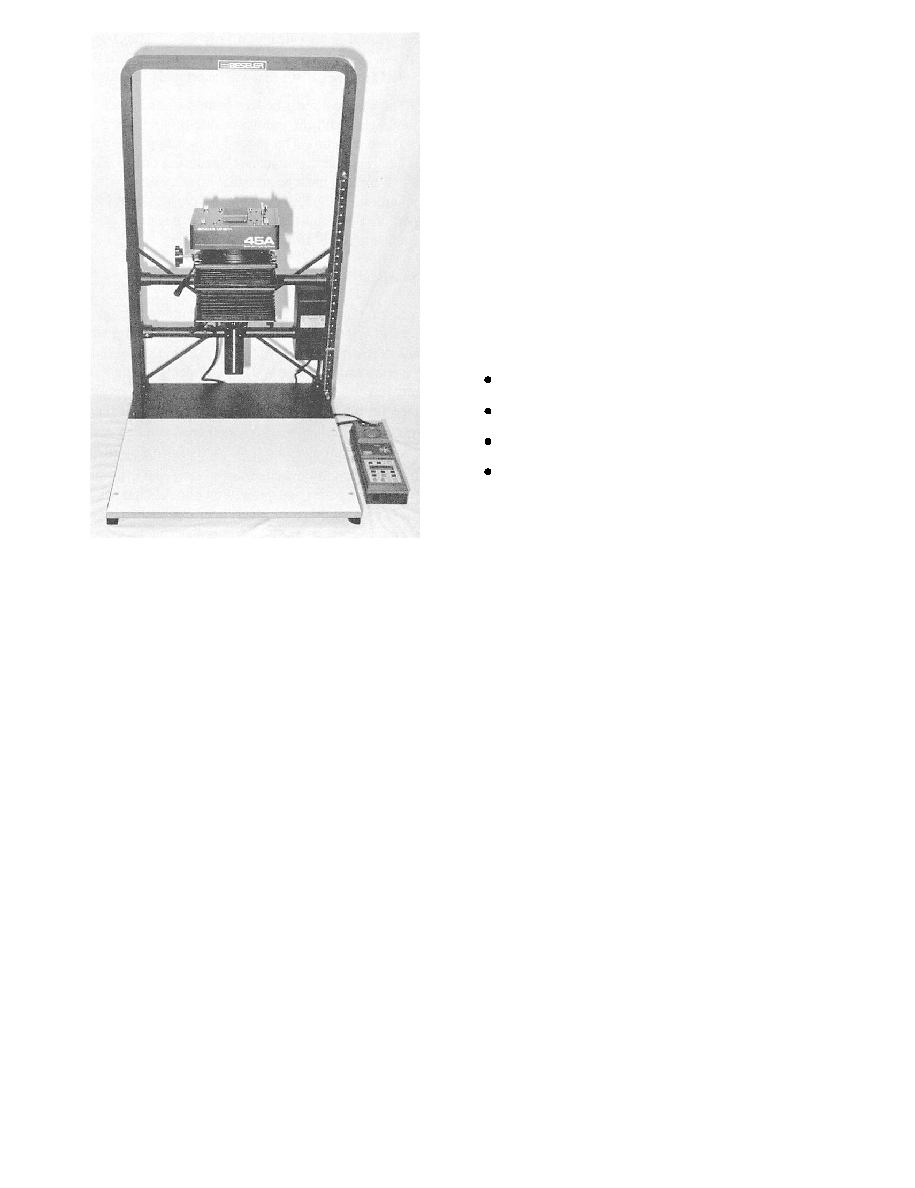
DOFMaster
for Windows
On-line
Depth of Field
Calculator
DOFMaster for Mobile Devices
On-line
Depth of Field
Table
Hyperfocal
Distance Chart
Articles
FAQ
Recommended
Books
Support
Contact
Links
Home
for Windows
On-line
Depth of Field
Calculator
DOFMaster for Mobile Devices
On-line
Depth of Field
Table
Hyperfocal
Distance Chart
Articles
FAQ
Recommended
Books
Support
Contact
Links
Home
As an Amazon Associate I earn from qualifying purchases.
![]()
lens (CC filters) to control the color quality of the
exposing light.
The xenon tubes are mounted at the top of the head of
the enlarger above red, green, and blue filters. The
number of flashes through each color filter. By adjusting
the number or length of time that the filtered-light
sources flash, you can correct the color balance of the
print. The color head of the enlarger is normally
equipment, color printing is as flexible and practical as
black-and-white printing. The primary interest to you,
as a Navy Photographer's Mate, is to produce color
prints with an acceptable color reproduction of the
original scene.
prints.
original scene as follows:
tripack material-the color printing paper. If you need to
refresh your memory on the characteristics of color
printing paper, refer to chapter 2.
colors reproduced in the color negative are
complementary to the original subject colors, a red car
and green; therefore, the two emulsion layers in the
paper that are sensitive to blue and green are affected
when the negative is printed. Then during print
processing, yellow dye forms in the exposed portion of
the blue sensitive layer of the paper, and magenta dye
forms in the exposed portion of the green sensitive layer
of the paper. Yellow and magenta in combination
produce red; therefore, the red car is reproduced in its
original color. All the other colors form in the same way.
individual objects in the scene as well as the overall
color balance of the print. The mood of a color print can
be changed by altering the color balance. A winter
landscape may be printed on the blue side to intensify
Basic Photography Course

As an Amazon Associate I earn from qualifying purchases.
WWW.DOFMASTER.COM
© 2006 Don Fleming. All rights reserved.
© 2006 Don Fleming. All rights reserved.